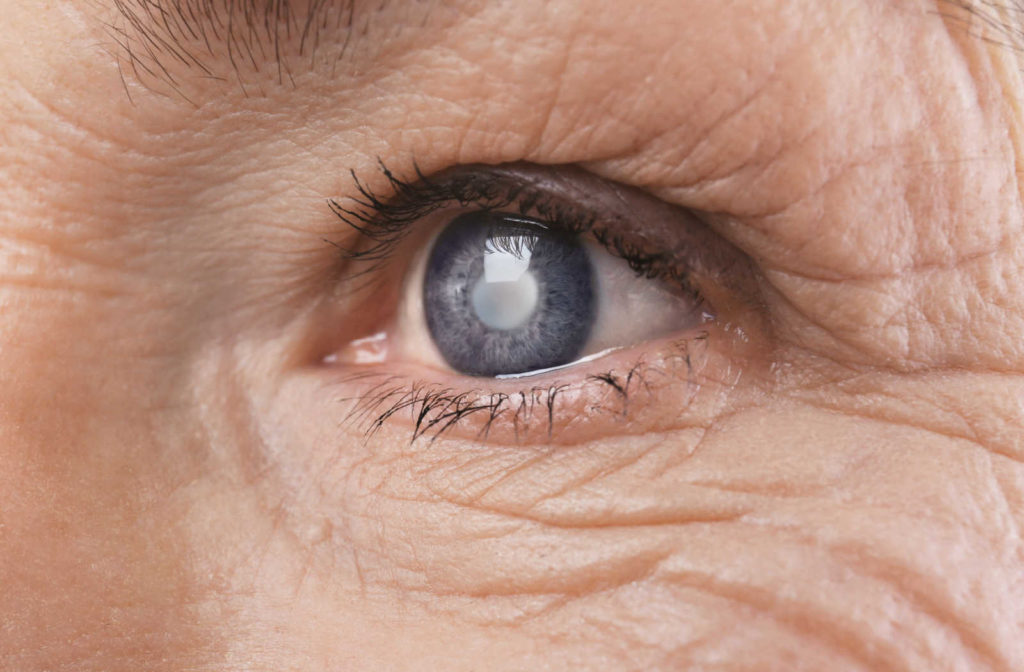Spotting Cataracts
Your eyes change all your life. While many significant changes often occur during childhood, vision changes can happen at any age. Vision typically stabilizes between ages 20–21 because your eyes stop growing, but what about tissues inside the eye?
Cataracts are a common lens disorder that causes vision changes, typically in adults over 55 years old. But a cataract can develop at any age and can even present at birth. So how can you spot a cataract, and what are your treatment options?
What Is a Cataract?
Cataracts are the result of the clear natural crystalline lens becoming cloudy. How the cataract impacts your vision depends on the size and location of the opacification inside the lens. There are 3 main types:
- Nuclear cataracts form in the middle of the lens and cause the nucleus (centre) to become yellow or brown. A nuclear cataract may initially increase nearsightedness or even temporarily improve your reading vision. However, it also causes decreased colour vision, poor night vision, light sensitivity, halos and glares.
- Cortical cataracts appear wedge-shaped or like streaks around the edges of the nucleus. As the cataract develops, it grows closer to the center of the lens. Cortical cataracts can cause poor depth perception, light sensitivity, and decreased vision in low light, halos and glare.
- Posterior subcapsular cataracts form at the back of the lens and typically develop quicker. A posterior subcapsular cataract often causes poor near vision, halos, glare, and reduced vision in bright and dim light settings..
Cataracts usually develop at similar rates in both eyes but can be asymmetric. Most cataracts develop slowly over many years, but some can form rapidly within months. In the later stages of development, the opacification can become visible. However, cataracts develop without pain, redness, or external irritation.
What Causes Cataracts?
Usually, the eye’s crystalline lens is transparent, flexible tissue, allowing light to pass through easily and changing shape to focus light for viewing near or far distances. The lens is mainly composed of water and proteins. Around age 40, the proteins in the lens begin to change, breaking down, changing in configuration and clumping together.
The protein clumps grow, getting thicker and spanning more space throughout the crystalline lens. Over time, the opacification reduces how much light can pass through and decreases the lens’ flexibility, resulting in poorer vision. Cataracts can also develop a yellowish or brown tint, affecting how you may see colours.
Although cataracts are more common in older adults, lens changes can happen at any age. Congenital cataracts can develop before birth or in childhood.
Infants may develop cataracts for many reasons, including heredity conditions, infections, injuries, inflammation, or drug reactions. In older children, eye trauma (such as a severe blow to the eye) is the most common cause, contributing to 40% of cases.
The most common risk factors associated with cataracts include:
- Aging
- Diabetes
- Eye injuries
- Family history of cataracts
- Heavy alcohol consumption
- High blood pressure
- Poor diet
- Use of corticosteroid topical and oral medications
- Obesity
- Smoking
- UV light exposure

Cataract Symptoms & Signs
The first signs and symptoms can vary depending on the type and stage of development. But, blurry or fuzzy vision is often one of the first symptoms of early cataract development.
Common symptoms cataracts cause throughout various stages include:
- Blurry or foggy vision
- Decreased night vision
- Dull or muted colour vision
- The feeling of a film covering the eye
- Light sensitivity or glare
- Halos or streaks appearing around lights
Cataracts can cause legal blindness (less than 20/200 vision) and complete blindness when severe and left untreated. However, surgical treatment can reverse blindness even in late-stage cataract development.
Managing Cataracts
In the early stages of cataract development, vision is usually minimally affected and glasses or contact lenses can help you see more comfortably. However, as the size or density of the cataract grows, prescription lenses cannot improve vision effectively.
In the later stages of cataracts, decreased vision can interfere with your daily activities and quality of life. As a result, your eye care provider may recommend cataract surgery.
The now opacified, natural lens is removed during cataract surgery and replaced with an intraocular lens (IOL) implant. The uniquely designed artificial lens restores vision and eliminates the risk of future cataract development. Patients can also benefit from vision enhancement features, such as IOLs offering functional, dynamic vision or light-adaptive material (similar to transition lenses). Please see the IOL videos and information on our website.
Diagnosing Cataracts
Your eye care provider may use multiple assessments to evaluate your eyes to determine a diagnosis. In addition to other tests performed during a regular comprehensive eye exam, checking for cataracts can involve:
- A visual acuity test: your eye care provider will instruct you to focus on a letter chart and identify what you can see; visual acuity testing assesses the sharpness or clarity of your vision.
- A slit lamp exam: your eye doctor uses a low-powered microscope and a slit lamp (a high-intensity light) to examine the front of your eye. The narrow line of light allows your doctor to focus on small sections or tissue, including your cornea (clear front of the eye), iris (coloured part of your eye), and lens.
Your eye care provider will also discuss your concerns and symptoms when forming their diagnosis or treatment recommendations.
Cataract Solutions
Cataracts can cause multiple symptoms, some easy to manage and others challenging. But, no matter what stage or symptoms you’re experiencing, there are many ways you can improve your vision and comfort.
At Vector Eye Centre, our incredible team is ready to help you find a solution for your vision needs. We are experts and very experienced in cataract surgery and refractive lens exchange procedures which are utilized to remove and replace an opacifying crystalline lens. We offer the full spectrum of IOLs and offer the diagnostics and accuracy to obtain excellent results after surgery. We diagnose and manage all types of eye conditions. Please see the IOL videos and information on our website.
So whether you’re considering cataract surgery, refractive lens exchange or need more information, please contact us.



